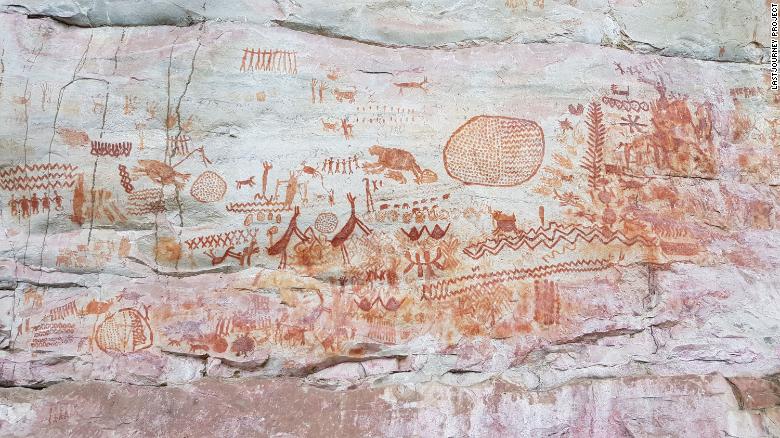
© CNN News
Vocabulary:
- frieze /freez/
- diversity /dih-VUR-si-tee/
- millennium /mi-LEN-ee-uhm/
- morphological /mor-fuh-LAA-juh-kl/
- conclusive /kuhn-KLOO-siv/
[noun] – a narrow piece of decoration along a wall, either inside a room or on the outside of a building just under the roof
The castle’s frieze is decorated with gold.
[noun] – the fact of many different types of things or people being included in something; a range of different things or people
Nature’s diversity is the theme of this painting.
[noun] – a period of 1,000 years, or the time when a period of 1,000 years ends
There will be a banquet to celebrate the city’s millennium.
[adjective] – relating to the scientific study of the structure and form of animals and plants
The scientists examined the morphological characteristics of lizards.
[adjective] – proving that something is true, or ending any doubt
They were not able to provide any conclusive evidence of the crime.
Article reading:
However, the “extinct megafauna’s” discovery among the dazzlingly beautiful paintings is contentious and debatable. While Iriarte acknowledges that the new research is not conclusive in this argument, he is certain they have discovered evidence of early human contacts with some of the world’s vanishing giants. The five animals identified in the paper are: a giant ground sloth with massive claws, a gomphothere (an elephant-like creature with a domed head, flared ears, and a trunk), an extinct lineage of the horse with a thick neck, a camelid like a camel or a llama, and a three-toed ungulate with a trunk. He claims that they are well-known due to preserved skeletons, which allow paleontologists to reconstruct what they must have looked like.
Discussion Questions:
- Have you seen historical paintings? What do you think about them?
- What is the most unusual animal you have ever seen? Please describe it.
- If you were a researcher, would you be interested to do a study of the rock paintings? Why or why not?
- Do you believe that extinct giant animals existed?
- In your opinion, how would paleontologists benefit from this discovery?
Summarization
Describe:
- extinct
- depict
- likely
- trunk (animal)
- reconstruct